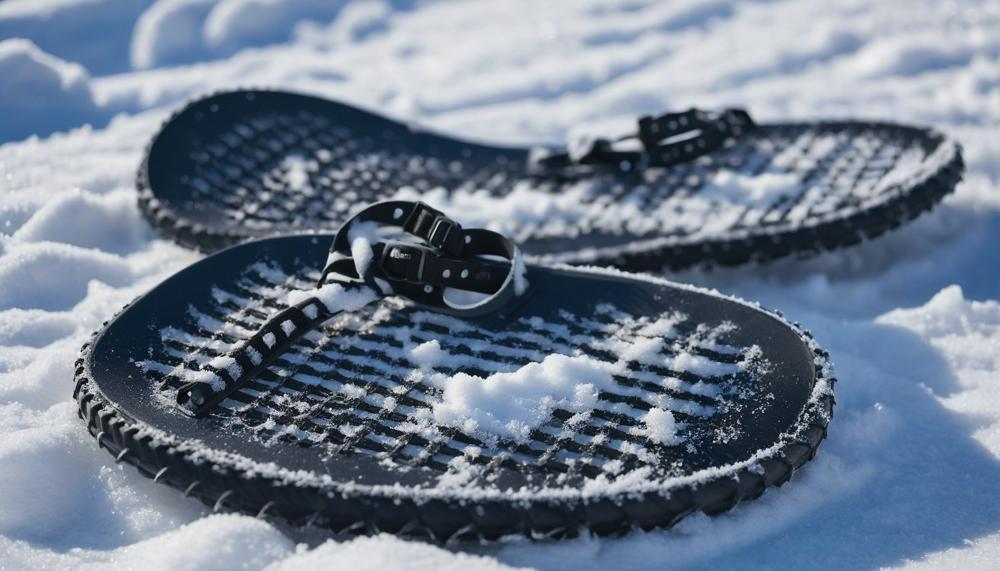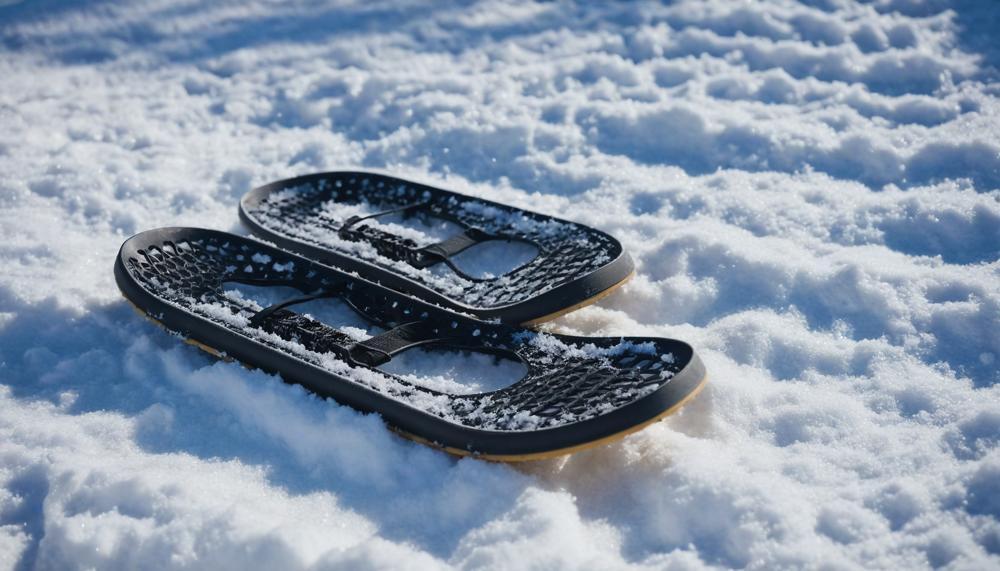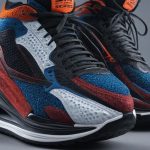Selecting the right footwear for snowy conditions isn’t just a good idea—it’s essential. Should you wear just any shoes when venturing out into the snow? The short answer is no. Snow and ice demand specific qualities in footwear to ensure safety, comfort, and warmth.
Regular dress shoes or those made from cloth or canvas will leave you cold and slipping, while full grain or top grain leather shoes offer better water resistance and barrier against the snow.

Why focus so much on the type of shoes you wear in the snow? Here’s why:
- Water Resistance: Leather shoes, especially when treated with a weatherproof spray, keep moisture out effectively.
- Insulation: Shoes with a cozy lining are ideal for trapping heat, ensuring your feet stay warm even on the coldest days.
- Traction: Depending on your activity, the need for traction varies. From microspikes for light walks to rigid crampons for mountain climbing, the right traction is critical to prevent falls.
- Durability and Fit: Well-fitted, durable shoes with rubber soles and deep treads enhance stability and comfort on snowy and icy surfaces.
This introduction is designed to guide you through the key considerations for choosing the best shoes for snowy conditions. Whether you’re simply shoveling the driveway or planning a winter hike, the right shoes can make all the difference.
Let’s dive deeper into each of these points to ensure your next walk in the snow is safe and enjoyable.
What Is A Snowshoe?
Contents
A snowshoe is a type of footwear designed specifically for walking over snow. Unlike regular shoes, which may sink into snow due to their smaller surface area, snowshoes distribute the weight of the person over a larger area, preventing them from sinking significantly into the snow.
This design is akin to how a ship’s hull spreads its weight to stay afloat on water.
Difference between Snowshoes and Regular Shoes:
| Feature | Snowshoe | Regular Shoe |
| Surface Area | Large to distribute weight | Smaller, suited for solid surfaces |
| Material | Lightweight metal or synthetic materials | Various, including leather, synthetic, canvas |
| Traction | Aggressive with crampons or spikes | Varies, generally less aggressive |
| Usage | Specifically for snow | General everyday use |
| Insulation | Often built with added insulation | Depends on design, not specifically insulated unless designed for winter |
Snowshoes come in various styles such as recreational, backcountry, and racing, each designed for specific snow conditions and activities. Recreational snowshoes are ideal for simple walks, backcountry snowshoes cater to rugged terrains, and racing snowshoes are lightweight and built for speed.
In contrast, regular shoes come in myriad types but are generally not suitable for snow unless they are specifically designed as winter shoes, which often feature waterproofing and traction suited for icy conditions. Regular shoes, whether made of leather, synthetic materials, or canvas, lack the necessary features such as large surface areas and deep crampons that are essential for effective movement on snow.
Snowshoe Considerations
Choosing the right snowshoes for winter activities requires careful consideration of several factors to ensure safety, comfort, and functionality. Below is a detailed breakdown of these considerations:
- Weight Capacity: Snowshoes must be able to support your weight plus any gear you carry. Different models have different weight ratings.
- Terrain Type: The type of terrain you plan to explore significantly influences your choice. Flat terrain models differ from those designed for mountainous or icy conditions.
- Snow Conditions: Snowshoes perform differently in powdery versus compact snow. Your choice should reflect the typical snow conditions you expect to encounter.
- Frame and Crampon Material: The durability and traction depend on these materials. Aluminum frames and steel crampons are ideal for rugged conditions.
- Binding System: A secure and comfortable binding is crucial for long treks. Ensure the binding system is easy to use, especially with gloves on.
- Size and Shape: Larger snowshoes are better for softer snow, while smaller ones are suited for firm snow. The shape also affects maneuverability.
What Are The Ideal Shoes To Wear While Snowshoeing?
The ideal shoes for snowshoeing should possess the following characteristics:
| Characteristic | Description | Example |
| Waterproofing | Essential for keeping your feet dry in snowy conditions. Look for materials like Gore-Tex or rubber. | Gore-Tex Boots |
| Insulation | Provides warmth in freezing temperatures. Thinsulate or wool linings are highly recommended. | Thinsulate-Insulated Boots |
| Rigid Sole | Offers stability and support, crucial for navigating uneven terrain. Vibram soles are a good choice. | Vibram Sole Boots |
| Comfort | Ensures you can wear the boots for extended periods without discomfort. Look for cushioned insoles and adjustable fit. | Superfeet Insoles |
| Compatibility with Snowshoes | Must securely fit into the bindings of your snowshoes. Check the binding system compatibility before purchase. | Snowshoe Binding Guide |
These features ensure that your footwear provides the necessary protection, warmth, and support for an enjoyable snowshoeing experience.
What Are The Shoes Not To Wear While Snowshoeing?
| Shoe Type | Reason to Avoid | Consequences |
| Uggs | Not waterproof, lack necessary grip | Poor performance, discomfort in wet and icy conditions |
| Sneakers | Insufficient insulation, not compatible with bindings | Cold feet, inability to securely attach to snowshoes |
| Fashion Boots | Lack durability and grip for rugged terrain | Slips and falls, possible damage to the boot |
When heading out for a day of snowshoeing, some footwear just won’t make the cut, risking not only comfort but also safety. Uggs and similar fashion boots, though stylish and cozy under normal circumstances, falter in snowy, icy environments because they don’t provide the waterproofing or the grip required for snowshoeing. They also typically lack the stiffness needed to secure snowshoe bindings effectively.
Sneakers are another poor choice. They may be light and comfortable for dry, temperate conditions, but in the cold and wet, they offer little in the way of insulation or water resistance. Sneakers won’t allow for a tight enough fit with most snowshoe bindings, which can lead to a frustrating experience as you may struggle with a loose fit while trekking through snow.
Finally, while some fashion boots might appear robust, they are usually not designed for the rigours of snowshoeing. They often do not have the necessary durability and features such as non-slip soles, adequate insulation, or the structural support needed for snowy landscapes, leading to potential slips and falls.
Choosing the right footwear is crucial for an enjoyable and safe snowshoeing experience, focusing on boots specifically designed for winter conditions, with features like high insulation, waterproof materials, and rigid, gripping soles compatible with snowshoe bindings.
Conclusion
In the snowy season, your choice of footwear is more than a fashion statement—it’s a shield against the elements.
Venturing into the cold with improper shoes can lead to discomfort, slips, and even frostbite. To navigate snowy landscapes effectively, you need shoes that go beyond ordinary.
Leather or specialized winter shoes treated with waterproof sprays are your first line of defense, blocking moisture and sealing in warmth. For those planning more intense activities, snowshoes offer a strategic advantage.
Their larger surface area prevents sinking into the snow, much like a ship’s hull glides across the water, while their aggressive traction aids in conquering icy terrains. Choosing the right shoes involves considering the shoe’s ability to repel water, insulate against cold, and provide traction.
Remember, the right footwear isn’t just about comfort; it’s about maximizing your performance and safety in winter’s challenging conditions.






